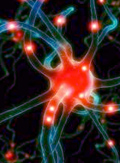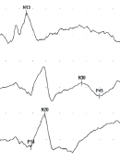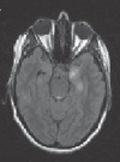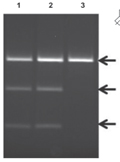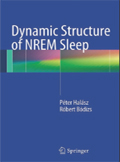The eLitMed.hu medical portal uses computer cookies for convenient operation. Detailed information can be found in the Cookie-policy.
Clinical Neuroscience - 2013;66(05-06)
Content
[Neurorehabilitation, neurology, rehabilitation medicine]
[We have read several publications of great authority on the neurological profession in the last two years in which were expressed assessments of the current situation combined with opinions about neurology and the necessity to reorganize neurological patient care. These articles took up the question of neurorehabilitation too. The authors, who on a daily basis, deal with the rehabilitation of people with disabilities as a consequence of neurological conditions, summarize some important definitions of rehabilitation medicine and the present system of neurological rehabilitation, as it is defined by the rehabilitation profession.]
[Targeted nanomedicine in diagnostics and therapy of neurological diseases]
[The incidence of neurological diseases increases. The up to date diagnostics and therapeutics approaches require the cost-effective and personalized solutions. The nanomedicine now, - and likely more in the future - opens a new horizon in the treatment of neurological diseases. The nano-size materials have several advantages that make it their use as drug delivery systems, and imaging agent. Very important aspect is that these materials can transfer across the bloodbrain barrier. The functionalization and surface modification of nanomaterials enhances this effect. The authors summarize of neurological application of nanoparticles according to the current data. They provide an overview about the most common used nanomedical materials, targeted drug delivery mechanisms and nano-imaging opportunities.]
[Effective, safe stroke prevention with novel oral anticoagulants in patients with atrial fibrillation. Focus on dabigatran]
[Non-valvular AF is the most common cardiac arrhytmia. Its incidence increases with age. AF is an independent risk factor for ischaemic stroke, representing a five times higher risk for it, associated with a high mortality rate. Beside AF, there are several other risk factors which influence the risk of stroke. Stroke risk calculator can be used to assess the risk of patient having a stroke. The most endangered group of patients with AF are those who have already suffered from cerebrovascular event. The only effective medication for prevention of stroke due to AF had been the application of vitamin K antagonists (VKA) which considerably decrease the rate of ischaemic event in a patient with AF providing that the INR is in the therapeutic range. VKA have several limitations of use in clinical practice and the fear of bleeding complications results an underusing of these drugs. Only 50% of all patients treated with VKA reaches the therapeutic range of INR. The breakthrough of prevention of stroke in recent years is undisputedly the coming out of novel oral anticoagulants (NOACs, thrombin and Xa-factor inhibitors). Recent studies suggest that these novel drugs prove the same efficacy as VKA drugs, furthermore dabigatran in a dose of 2×150 mg or apixaban in 2×5mg was statistically superior to warfarin in the prevention of stroke. NOACs have shown a large reduction in intracranial hemorrhage compared with warfarin. They are given as a fixed dose and do not require persistent monitoring making them much more convenient. NOACs at guidelines of European Society of Cardiology act as a preferable drugs in case of ischaemic stroke with AF. Probably the extended use of NOACs in clinical practice will be the mainstream of stroke prevention in the future.]
[Spectral, phase-synchronization, and graph theoretical EEG changes related to mental arithmetics]
[During mental arithmetic operations working memory playsan important role, but there are only few studies in which anattempt was made to separate this effect from the process ofarithmetics per se. In this study the effects of arithmetic onthe EEG of young adults (14 participants, six of themwomen, mean age 21.57 years, SD: 2.62) was investigatedduring a subtraction task in the θ(4-8 Hz) frequency band.Besides the power density spectrum analysis phasesynchrony based on recently developed graph theoreticalmethods were used and strength of local connections (clustercoefficient; C) and global interconnectedness of network(characteristic path length; L) were determined. Before thearithmetic task passive viewing (control situation) and anumber recognition paradigms were used. During the arith-metic task compared to the control situation significantlyincreasing phase synchrony and C values were found. L wassignificantly shorter (F(2, 26)=818.77, p<0.0001) only dur-ing the arithmetic task: this fact and the former two resultsimply that the network topology shifted towards the “smallworld” direction. Our findings concerning regionaldifferences confirm those reported earlier in the literature:compared to the control condition significant task-relatedincrease was found in C values in the parietal areas [moreexplicitly in the left side, (F(1, 13)=7.2020, p=0.0188)],which probably corresponds to stronger local connectionsand more synchronized (sub)networks. During the task con-dition significantly increased θband power; (F(1,13)=7.9708, p=0.0144) and decreased L values werefound in the left frontal region compared to the right side(F(1, 13)=6.0734, p=0.0284), which can also be interpret-ed as an indicator of optimized network topology ofinformation processing.]
[Possibilities of gene therapy with recombinant adenovirus in the cortex and hippocampus]
[Background and purpose - Neurodegenerative diseases eg. ischemic stroke causes lifelong disabilities in cognitive functions and movement, furthermore high frequency of death. Antiapoptotic, or growth factor gene targeting to cortical structures could be a useful tool for neuroprotection in ischemic brain diseases. In present study we examined the feasibility of the gene therapy of the cortex and hippocampus via transfecting brain with recombinant adenovirus containing LacZ reporter gene in normal and postischemic condition. Since translation of proteins can be inhibited following ischemia by the phosphorylation of ribosomal subunit eIF2α, phosphor-eIF2α immunohystochemistry were performed. Methods - Our adenovirus vector was introduced via the cisterna magna into control and postischemic gerbil brain. After 48 hours of transfection the brains were examined for X-gal staining. LacZ expressing cells showed blue colour. Five min. transient global ischemia was induced by clipping the vertebral and carotid arteries of gerbil. Phosphor-eIF2α immunohystochemistry were performed following 48 hours of ischemia. Results - Administration of adenoviral vector resulted in transfection of hippocampal CA1, CA2, CA3 cell layers while gyrus dentatus remained untransfected. Cortical pyramidal cell layers were also transfected. In postischemic brain the lack of LacZ gene expression were detected in the CA1 and CA2 layer of hippocampus. Ischemia caused eIF2α phosphorylation in hippocampal CA1, CA2, CA3 and most neuronal layers in the cortex. Conclusion - Introducing adenovirus vector via the cisterna magna may results in effective gene therapy of cortex and hippocampus. To develop effective gene therapy in postischemic hippocampal CA1 and CA2 cell layers needs further investigation. eIF2α phosphorylation probably doesn’t interfere with transgene expression.]
[Can somatosensory evoked potentials predict disease course in early multiple sclerosis patients?]
[Background - Multiple sclerosis (MS) is an autoimmune degenerating disease, where myelin degradation as well as axonal loss is present. Purpose - To asses whether recording the middle-latency components of the median nerve somatosensory evoked potentials (SEPs) increases the diagnostic sensitivity in patients with MS, and to investigate whether any of the abnormalities correlates with the severity of the clinical signs and predicts future outcome. Methods - Twenty consecutive MS patients at early onset were included. Median and tibial nerve SEPs were recorded at the time of the referral. Extended Disability Status Scale (EDSS) and Multiple Sclerosis Severity Score (MSSS) were assessed at the time of the referral and after 5-year followup. Results - Recording the middle-latency components increased the sensitivity of the median nerve SEPs from 50% to 75%. The overall sensitivity of the SEPs (i.e. including also tibial nerve SEPs) modestly increased (from 80% to 90%). The amplitude of the cortical N20 potential of the median nerve was inversely correlated to the clinical severity. None of the parameters could predict the future outcome. Conclusions - Our results provide neurophysiological evidence for the role of axonal lesions in the clinical disability of the patients with MS.]
[Benign-onset acute disseminated encephalomyelitis: A report on two cases]
[The signs and symptoms of acute disseminated encephalomyelitis are heterogeneous and dependent on the location and severity of the inflammatory process. The meningoencephalitic presentation may include meningism, impaired consciousness (occasionally leading to coma), seizures and confusion, or behavioral disturbances. Multifocal neurological features include a combination of optic neuritis, visual field defects, cranial neuropathy, sensorimotor impairment, ataxia, aphasia, and involuntary movements. One definition of acute disseminated encephalomyelitis is “an initial clinical event with a presumed inflammatory and demyelinating cause, with acute or sub-acute onset affecting multifocal areas of the central nervous system”. Patients with acute disseminated encephalomyelitis frequently suffer from seizures, disturbances of consciousness, fever, and headaches, and occasionally there are focal signs and symptoms. Here, we report on two cases who presented with different symptoms, but the clinical findings that the patients showed were benign.]
[Congenital myasthenic syndromes and transient myasthenia gravis]
[Hypotonia in the neonatal period and early infancy is a common clinical finding. It can be caused by various heterogeneous disorders of different origin which might lead to diagnostic difficulties. Disorders of the neuromuscular junction, such as congenital myasthenic syndromes and neonatal transient myasthenia gravis are among the aetiologies. We report on a case of congenital myasthenia caused by mutation in the long cytoplasmic loop of the epsilon subunit of the acetylcholine receptor and a neonate of a myasthenic mother diagnosed with transient myasthenia gravis.]
[The effect of hypertension and it’s therapy on cognitive performance of asymptomatic hypertensive patients]
[The essential hypertension increases the risk of cognitive impairment even in symptom-free patients. Sixty, non-treated hypertensives were investigated (44±10.5 év) with nine pszichological tests, measuring the reaction time, attention, short and long-term memory, psychomotor speed etc. The results of nine tests were summarized and compared with those of age-matched control persons (n=98). All hypertensives had normal CT findings. The carotid intima-media-thickness, the arterial stiffness and the velocities in the middle cerebral arteries were also analyzed (with tilting table test). The sum of the results of cognitive tests was significantly worse than that of controls 14.8±7.1 vs. 27.8±5.5 p<0.0001. The results of intima-media thickness and stiffness measurements were also significantly worse compared with controls while the middle cerebral velocities did not differ. After one year antihypertensive therapy not only the improvement of blood pressure, intima-media thickness and stiffness values could be detected but also the the score of summarized cognitive tests improved (from 17.4±6.0 to 31.6±6.0 p<0.0001).]
[Continuous dopaminergic stimulation in Parkinson disease: possibilities in 2013]
[Continuous dopaminergic stimulation in Parkinson disease: possibilities in 2013 2013;66(05-06)]
[Diseased brain, diseased nerves, diseased mind]
[Diseased brain, diseased nerves, diseased mind 2013;66(05-06)]
1.
Clinical Neuroscience
[Headache registry in Szeged: Experiences regarding to migraine patients]2.
Clinical Neuroscience
[The new target population of stroke awareness campaign: Kindergarten students ]3.
Clinical Neuroscience
Is there any difference in mortality rates of atrial fibrillation detected before or after ischemic stroke?4.
Clinical Neuroscience
Factors influencing the level of stigma in Parkinson’s disease in western Turkey5.
Clinical Neuroscience
[The effects of demographic and clinical factors on the severity of poststroke aphasia]1.
2.
Clinical Oncology
[Pancreatic cancer: ESMO Clinical Practice Guideline for diagnosis, treatment and follow-up]3.
Clinical Oncology
[Pharmacovigilance landscape – Lessons from the past and opportunities for future]4.
5.
